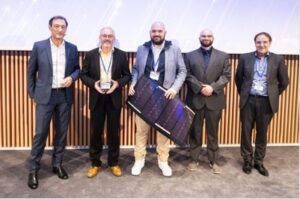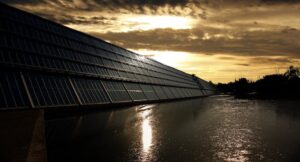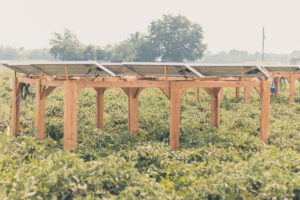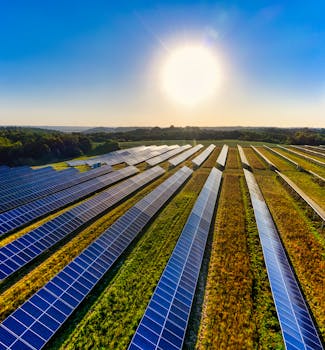Solar energy is one of our best tools for a sustainable future. It has become one of the most promising ways to reduce dependence on fossil fuels and build a cleaner, more resilient environment. But its impact extends beyond energy production. When thoughtfully implemented, solar infrastructure can support agriculture, protect wildlife, and preserve natural spaces that might otherwise be lost to development.
One emerging approach, known as agrivoltaics, offers a model for using land more wisely. By placing solar panels above working farmland, we can generate clean power without displacing crops or habitats. It’s an example of how energy and environmental goals can move forward together.
Innovation That Supports Clean Energy

At Kettering University, students are already pushing the boundaries of solar innovation. A team led by Dr. Chen Duan recently won the Audience Award at the Future of Energy for Mobility Challenge for their solar micromobility project. Their design helps electric vehicles charge more efficiently using solar energy. Although the project focused on transportation, the idea behind it (i.e. capturing solar power and applying it to real-world systems) mirrors what makes agrivoltaics so promising for land use and food systems.
Read more about their award-winning work here:
🔗 Kettering University: Solar Micromobility Project
Choosing Sites That Protect Nature

Solar energy has enormous potential, but where and how it’s built matters. According to the International Union for Conservation of Nature (IUCN), placing solar installations in the wrong locations can damage habitats and threaten biodiversity. Their recent report encourages renewable energy developers to avoid critical ecosystems and include safeguards to protect nearby wildlife.
Projects that follow these best practices help ensure that clean energy doesn’t come at the cost of nature.
Learn more from IUCN and WCS:
🔗 IUCN Guidelines on Renewable Energy and Biodiversity
Agrivoltaics: A Smarter Way to Use the Land

Agrivoltaics combines solar panels with active agriculture on the same plot of land. This dual use of space helps reduce pressure to choose between energy and food production. When done well, it also protects soil, supports pollinators, and improves resilience for both farms and local wildlife.
Some of the benefits include:
- Providing shade that reduces evaporation and helps crops retain moisture
- Creating habitat for bees and other pollinators in the areas around solar arrays
- Offering opportunities for farmers to generate income from energy without giving up their land
In regions vulnerable to drought or land loss, this model creates options that don’t sacrifice long-term sustainability.
What the Valentine Foundation Supports
At The Valentine Foundation, we are proud to support both innovation and conservation. Whether it’s funding education for students developing clean energy solutions or advocating for responsible land use, we believe in approaches that protect people and the planet.
We back efforts like:
- University research in renewable energy
- Programs that teach the next generation to think critically about energy and environment
- Science-based land use planning that includes room for wildlife, sustainable ecosystems, and energy and food production
A Future That Works for Everyone
Solar energy is one of our best tools for a sustainable future. It’s a chance to build a future where natural resources are used with care, where land is shared instead of divided, and where science leads the way toward balance.
As we invest in solar, let’s also invest in the people and ideas that make it truly sustainable for students, for farmers, for communities, and for the ecosystems we all depend on.
👉 Support Our Education and Conservation Work
👉 Learn More About Our Mission

